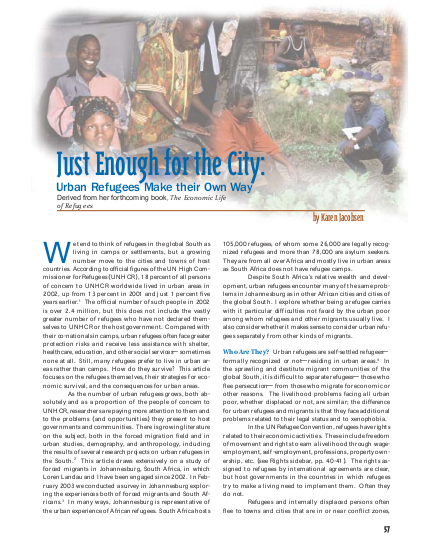
We tend to think of refugees in the global South as living in camps or settlements, but a growing number move to the cities and towns of host countries. According to official figures of the UN High Com- missioner for Refugees (UNHCR), 18 percent of all persons of concern to UNHCR worldwide lived in urban areas in 2002, up from 13 percent in 2001 and just 1 percent five years earlier.1 The official number of such people in 2002 is over 2.4 million, but this does not include the vastly greater number of refugees who have not declared them- selves to UNHCR or the host government. Compared with their co-nationals in camps, urban refugees often face greater protection risks and receive less assistance with shelter, healthcare, education, and other social services—sometimes none at all. Still, many refugees prefer to live in urban ar- eas rather than camps. How do they survive? This article focuses on the refugees themselves, their strategies for eco- nomic survival, and the consequences for urban areas.
Resource collections
- UN Habitat - Urban Response Collection
- Urban Response - Urban Crisis Preparedness and Risk Reduction
- Urban Response Collection - Community Engagement and Social Cohesion
- Urban Response Collection - Economic Recovery
- Urban Response Collection - Environment and Climate Change
- Urban Response Collection - Housing, Land and Property
- Urban Response Collection - Urban Crisis Response, Recovery and Reconstruction
- Urban Response Collection - Urban Resilience
